Intel’s Ghost Canyon NUC and Compute Element: 10 questions and intriguing facts - reesebothe1945
Intel's Ghost Canyon NUC and its Compute Element card were two of the most intriguing pieces of hardware shown by the company at CES 2020. They may be tiny, but they represent some banging changes to miniscule-strain-factor PCs. Here are the keystone questions and facts about this new generation.
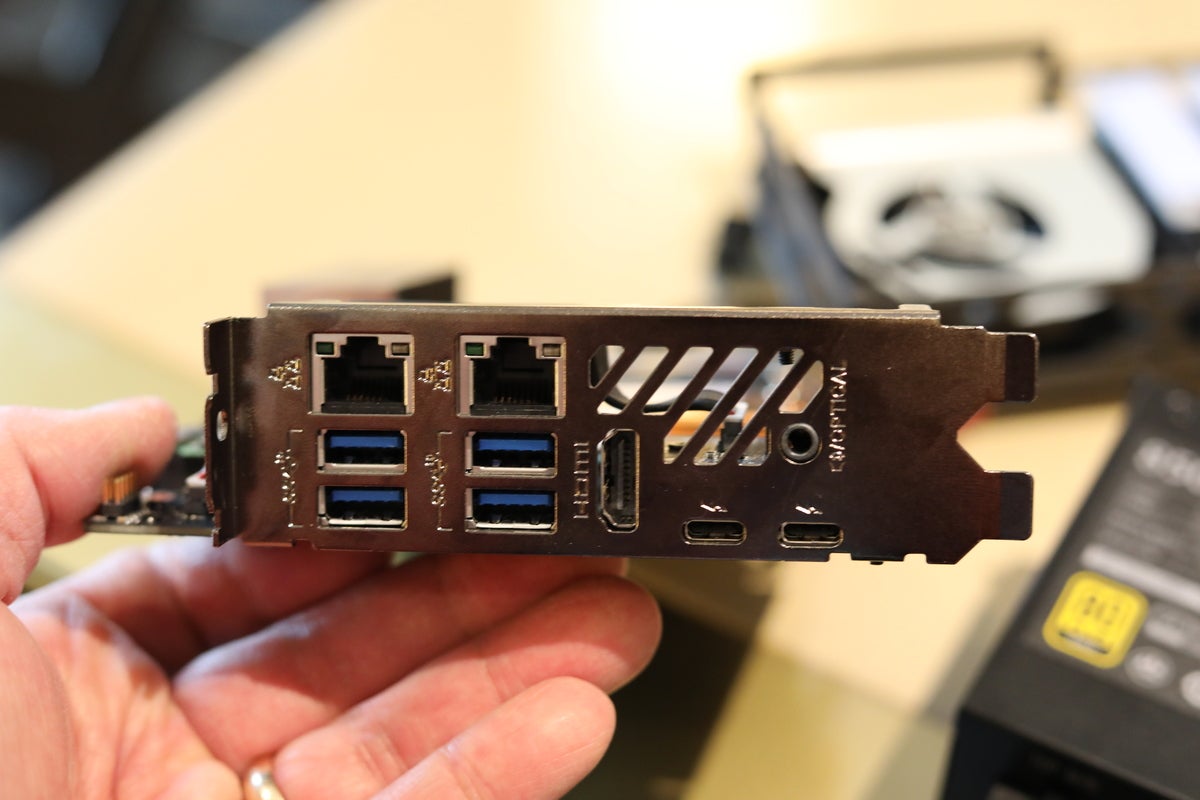 Gordon Mah Ung
Gordon Mah Ung The back of the Compute Element card features two Gigabit ethernet ports, four USB Type-A ports at 10Gbps, and an HDMI 2.0a port, along with two Thunderbolt 3 ports and a jazz band analog and optical SPDIF larboard.
What are Intel's Haunt Canyon NUC and Compute Element?
Intel's Ghost Canon NUC is a mini-Microcomputer (also titled a small-form-factor PC), and so is the Compute Component inside of it. That's non a brain-bender, but a new, standard advance. Where prior Intel NUCs had their own motherboards, the Ghost Canyon NUC is essentially a shell with a power supply, plus a baseboard that takes the Compute Element, a grumbling-feathered PC on a PCIe card. Theoretically, if you wanted to promote your Ghost Canon NUC, you'd upright remove the old Compute Element and put in a new one.
Intel's Compute Element features either a Core i5, Core i7, surgery Inwardness i9 mobile CPU, as comfortably as two RAM and two M.2 slots. Although some vendors suffer said the two M.2 slots on the Compute Element card are SATA, Intel's now-publicised documents pronounce they can be organized as either SATA OR NVMe, depending happening the device driver installed. The board features a vapor chamber for cooling system plus a small lover, as well as WiFi 6.
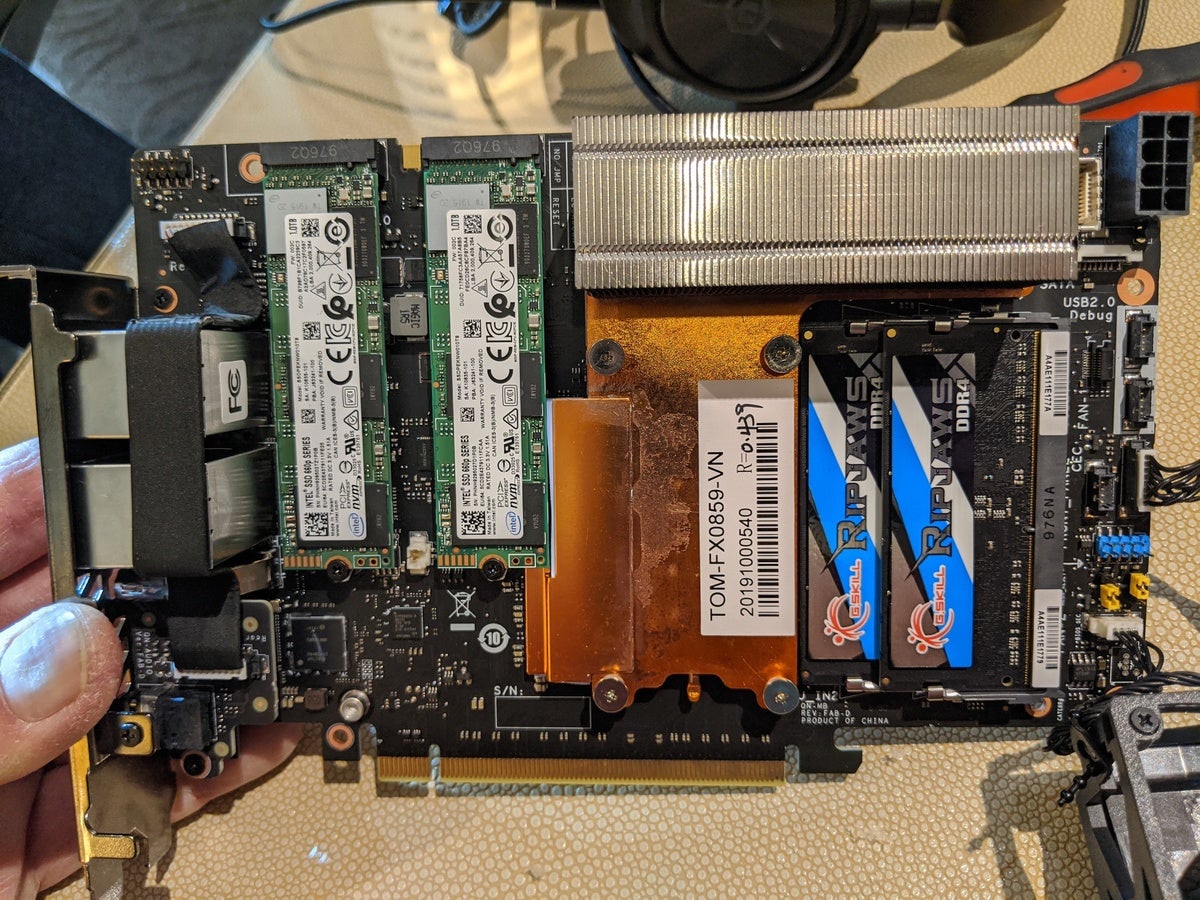 Gordon Mah Ung
Gordon Mah Ung Compute Element board with deuce SATA M.2 drives and RAM modules installed.
Is the Compute Element copyrighted to Intel?
Intel said it plans to build and sell the Compute Component card. One big question is antimonopoly how proprietary the card is. Given that information technology's basically like stripping the keyboard, speakers, presentation, bombardment, and shell from a laptop and slapping the motherboard into a PCIe card, virtually of that would be possible for a marketer to replicate.
Intel officials said while they aren't encouraging third parties to build their ain Reckon Elements, they're besides not dispiriting it. Thus along the trademarked weighing machine, we'd probably put IT at 3 out of 10.
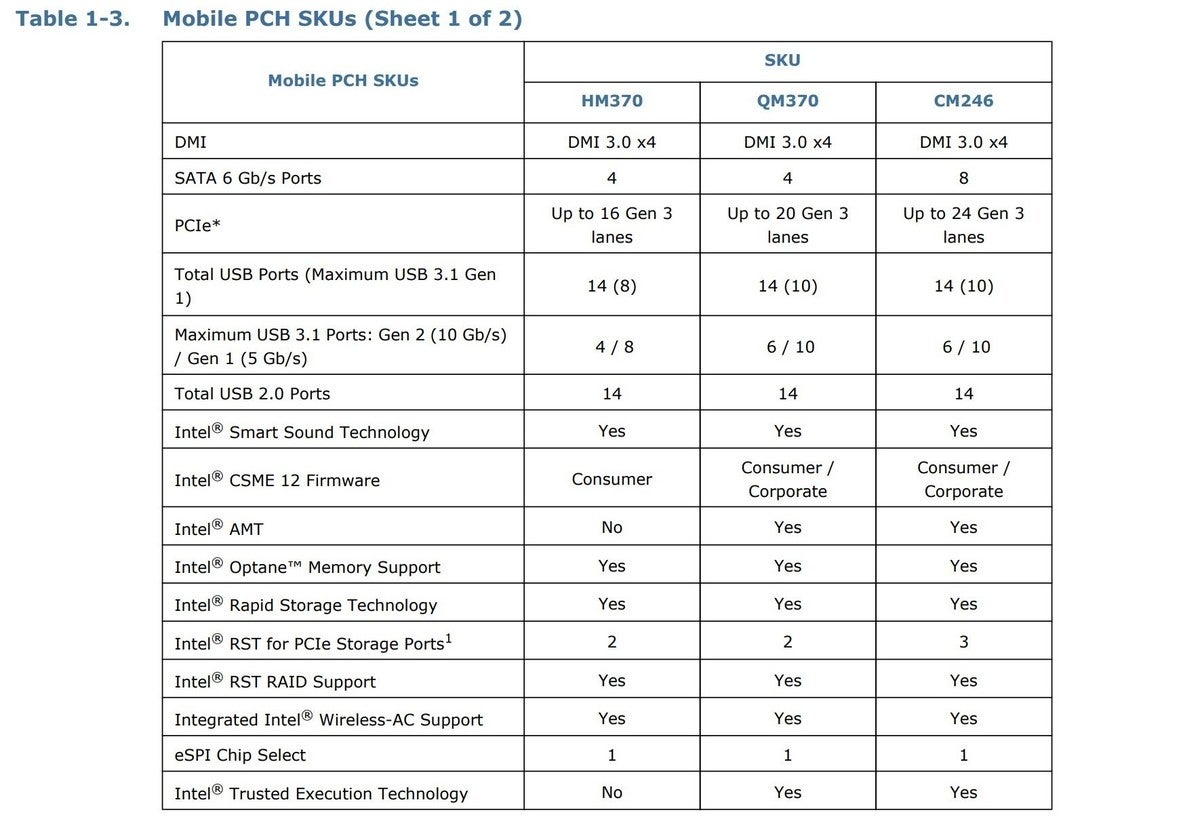 Intel
Intel Intel's consumer-based Cipher Element card game testament be built on the company's CM246 commercial chipset.
What's special about the Compute Element chipset?
Intel aforesaid all Compute Element cards will be supported the CM246 chipset for its Xeon CPUs, even if IT rocks a consumer-focused Core chip. Officials said that was done to simplify the boards, as in that location are Xeon-versions using the Xeon E-2286M likewise. The incentive for consumers will be the 24 PCIe lanes available from that CM246 chipset, versus the 16 lanes of the consumer HM370 chipset.
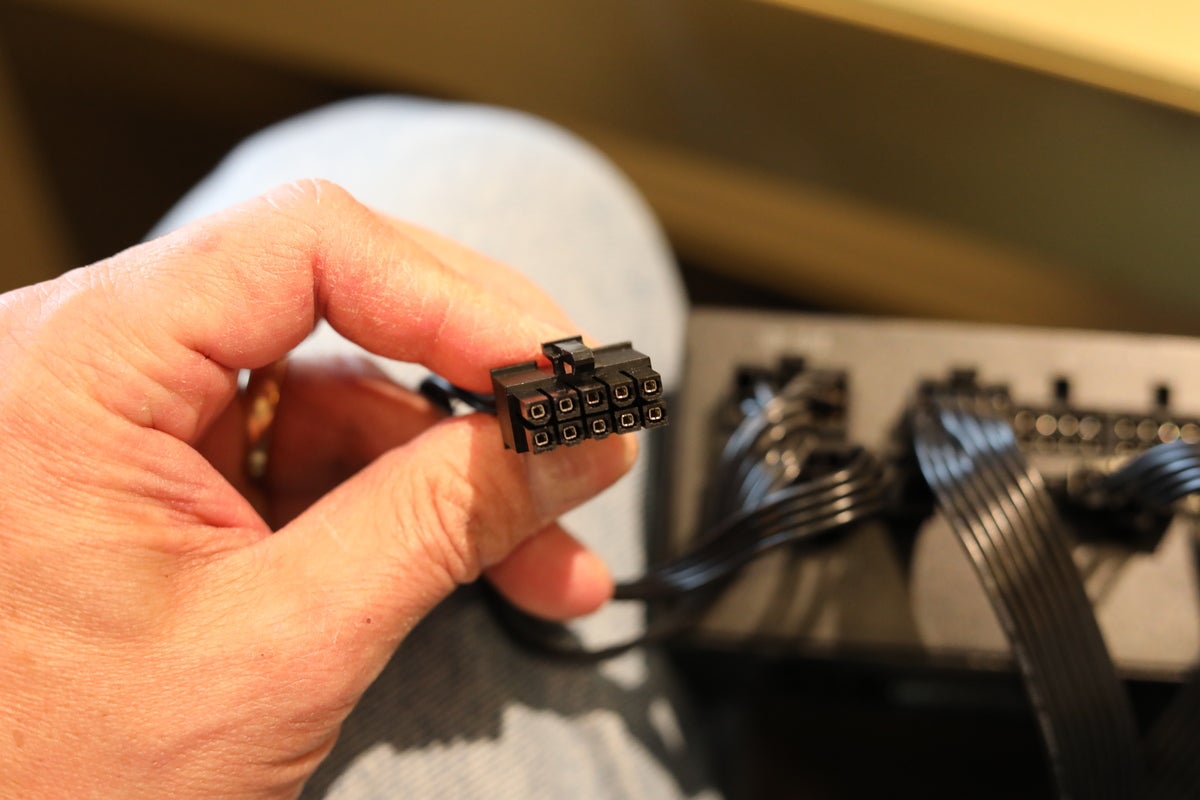 Gordon Mah Ung
Gordon Mah Ung The Reckon Element mopboard uses a non-regular 10-pin connector to power up. The connector is in reality just a reduction of pins from the 24-pin Main Power Connector.
What's up with the baseboard's not-standardised 10-pin connection?
Most of the mini-PCs we saw from CyberPower, Ibuypower, Razer, and Cooler Master feature SFX or SFX-L superpowe supplies inside the chassis. While the PSUs appear to be off the shelf, the Intel baseboard is powered by a non-normal 10-pin connector. That's not finished to mess with citizenry—IT's likely a decisiveness to keep off the board size obedient.
We've articulate to PSU makers who say the 10-pin is just a combination of some of the power pins from off-the-ledge PSUs. A simple cable will go far easy to adapt to existing PSUs. And no, they have no plans to sell the 10-immobilize to consumers today.
The Compute Element itself runs inactive a normal 8-pin ATX 12V/EPS 12V connector. For a build, you'd require the 10-pin plug for the baseboard and the ATX 12V connector, asset any superpowe the GPU mightiness need.
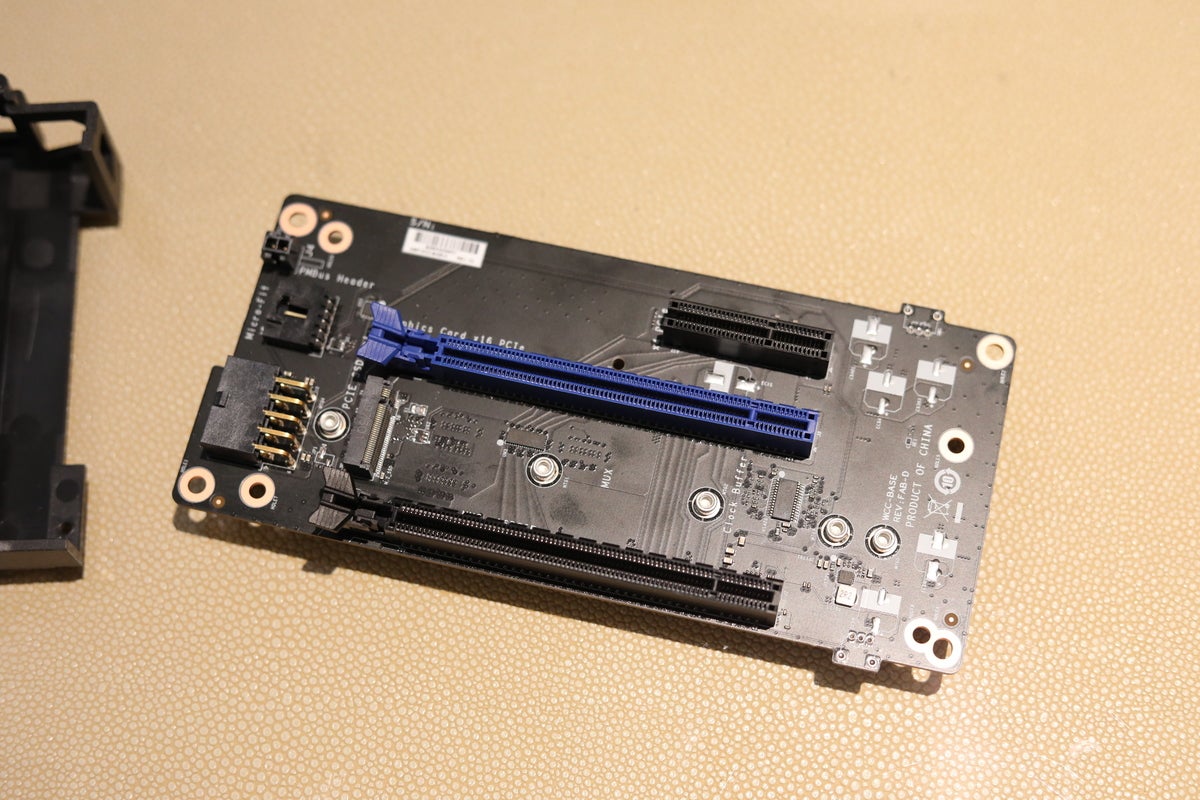 Gordon Mah Ung
Gordon Mah Ung The baseboard is the most flexible disunite of the Intel Compute Element initiative, which allows vendors to redesign to their needs.
The skirting board is where you customize IT
The mopboard is where third-company vendors can customize. Intel's features two x16 personal PCIe slots, a physical and electric x4 slot, and an M.2 slot with NVMe support. It bathroom be run victimization the structured graphics or discrete graphics plugged into the baseboard.
CyberPower's Nox miniskirt Personal computer, made-up in Cooler Skipper's case, will add space between the Cypher Constituent card and the GPU to help the CPU run cooler. Razer's Tomahawk N1 testament likely delete the M.2 slot altogether, because populating it throttles bandwidth happening the graphics card.
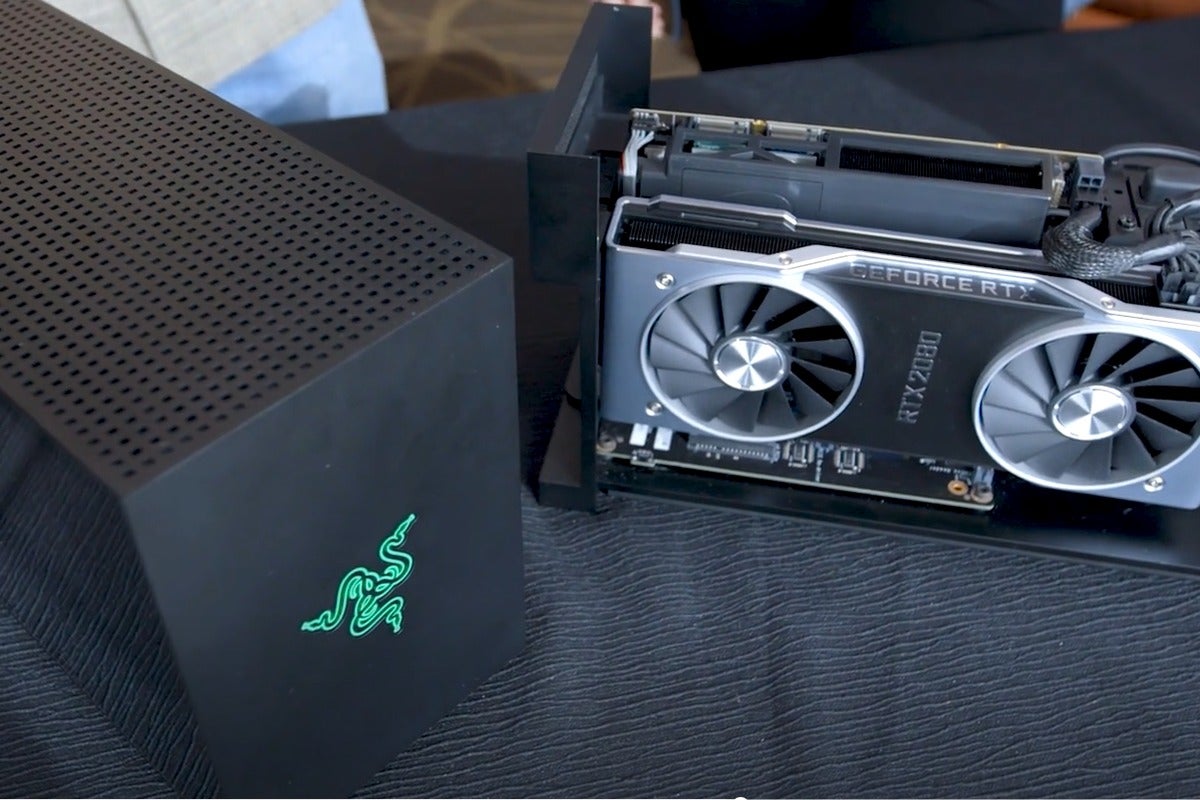 Adam Patrick Murray/IDG
Adam Patrick Murray/IDG The Razer Tomahawk N1 prototype we saw at CES in Las Vegas shows a modular future for small form factor PCs, where you can slot in motherboards and hereafter GPUs easily.
Why an NVMe drive will cut GPU bandwidth in half
Speaking of bandwidth, the Cypher Constituent has approximately limitations. It appears to plumb its 16 lanes of CPU-based PCIe into the baseboard, which past divides those lanes among the graphics card, the M.2 NVMe labor, or the x4 expansion slot. Because the CPU itself is limited to a utmost of 16 lanes of PCIe, populating the NVMe or x4 PCI slot will kick the GPU from 16 lanes to 8 lanes. While some vendors, much as Razer, aim to prevent that from happening by simply deleting both slots, others may let it slide because, well, very few consumer workloads demand the bandwidth of a gas-filled x16 connexion.
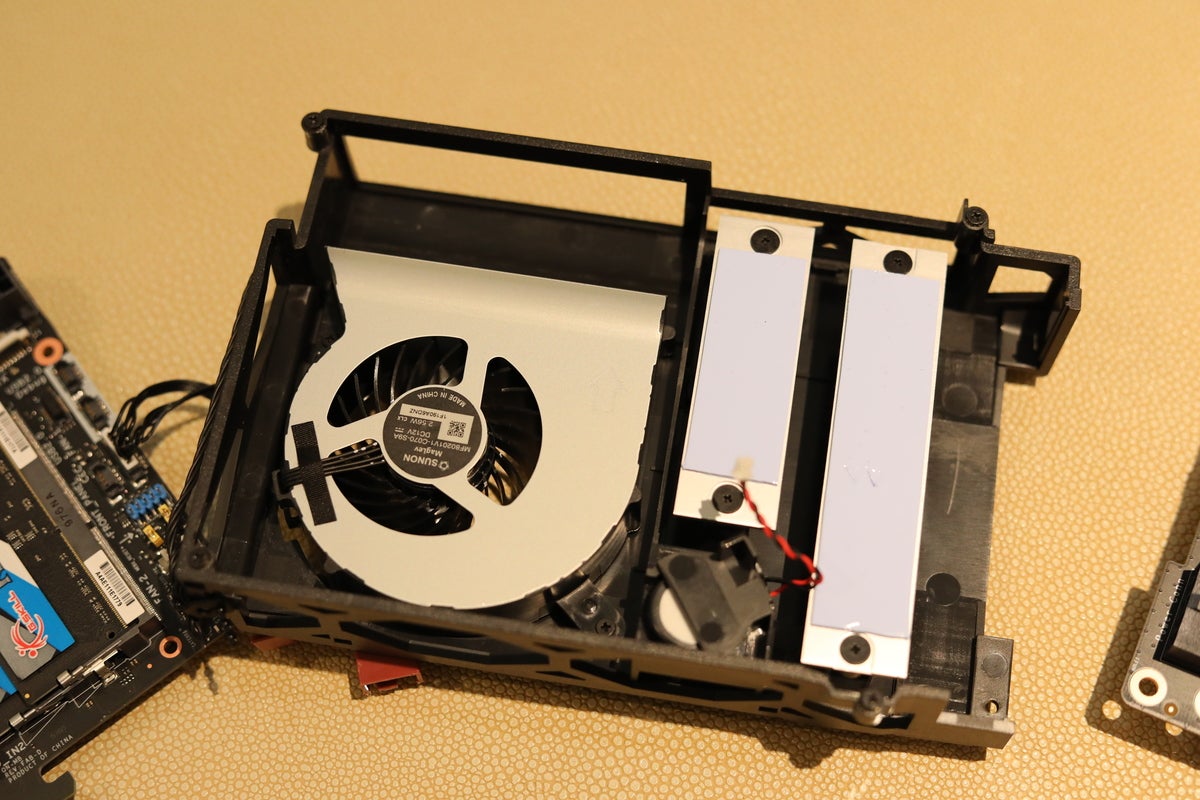 Gordon Mah Ung
Gordon Mah Ung Intel is ambitious real aggressive clock speeds considering the fan is small, and will be pressed up against a GPU in some designs.
The Core i9 Compute Element leave push the envelope
The priciest Compute Element used in the mini PCs will sport a Core i9-9980HK with its al-Qa'ida TDP set to 65 watts and a short term of up to 105 watts. That should proceeds fairly high clock speeds most of the time, rivaling those of most play laptops. Information technology's not enough to shove aside AMD's Ryzen 3000 CPUs operating theatre even desktop Core i9 chips, but for nigh gaming purposes, IT could be a pretty adequate setup.
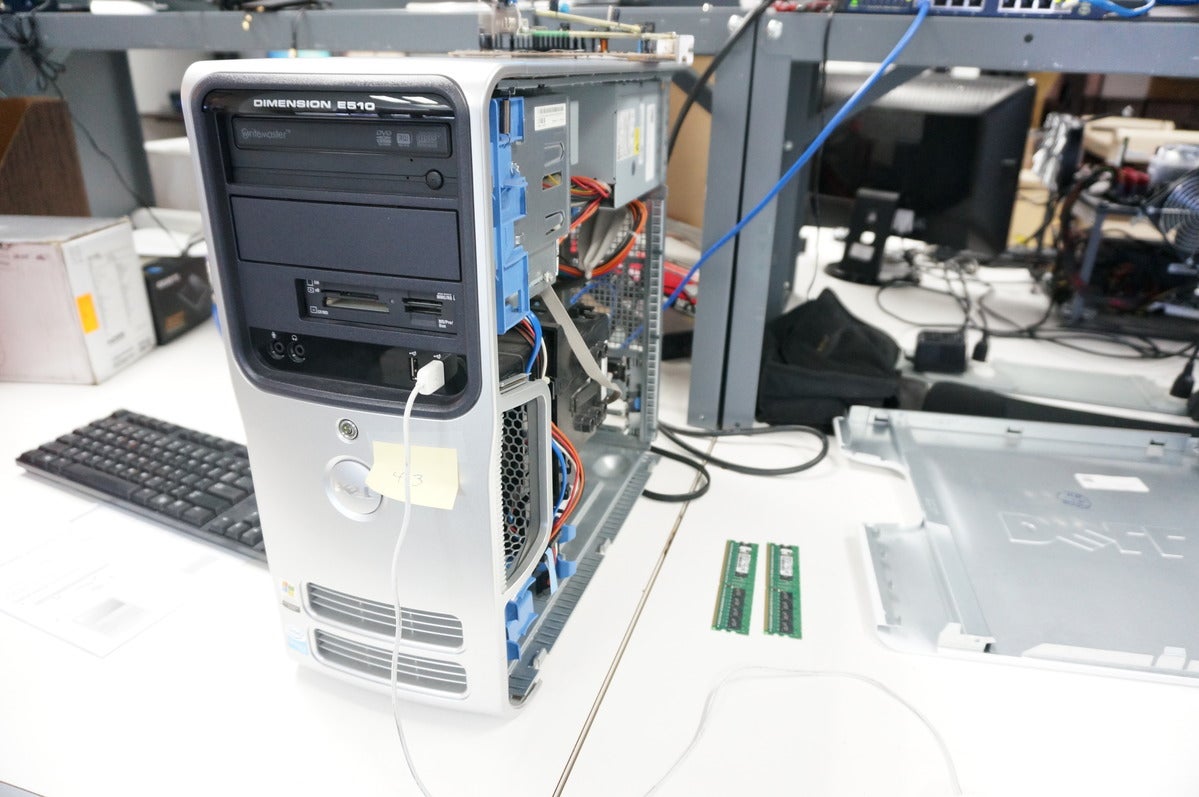 Gordon Mah Ung
Gordon Mah Ung In hypothesis, you can run
Why can't you upgrade your screen background with a Compute Element?
Patc the Compute Element is intended to make it easy to elevate a NUC, it's not designed to upgrade a regular desktop PC. The company said if you did install it into a motherboard's PCIe slot and run power thereto, the Work out Element would boot and run just fine. IT just wouldn't cost able to talk to the motherboard it's plugged into, nor would it be able to get at an contiguous GPU. It's likewise possible you'd have to powerfulness up the connected PC for the Compute Constituent to receive power through the PCIe slot, which could be problematic.
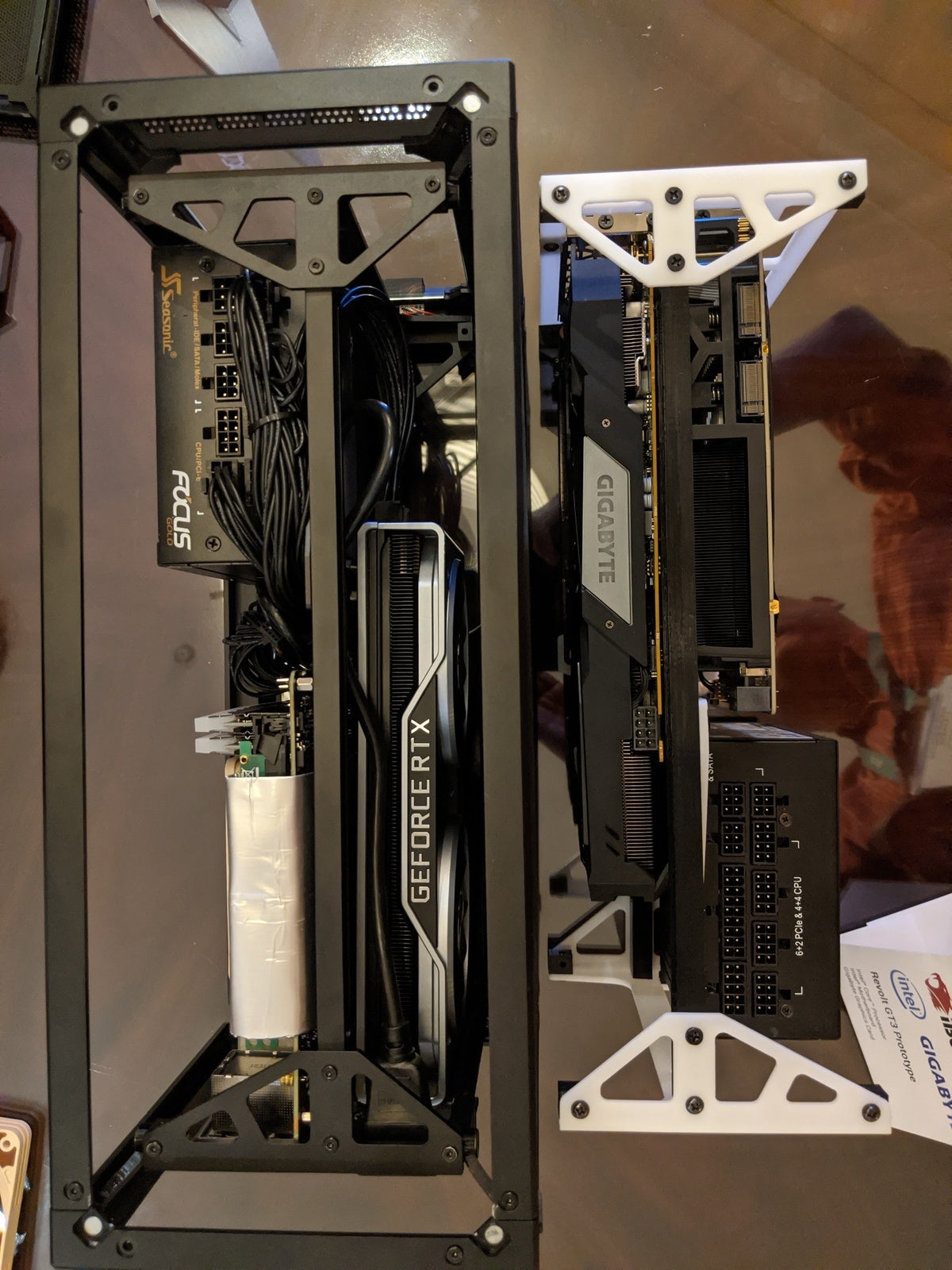 Gordon Mah Ung
Gordon Mah Ung iBuypower's Reckon Element concept features a chassis that can take the Compute Element—and also a standard Mini-ITX motherboard too.
Will the Compute Element concept succeed?
With the Compute Element, Intel is clearly trying to reinvent mini-PCs. Who wouldn't want the power to upgrade a complete machine in five minutes?
The question is whether consumers will embrace it. We can say that seeing multiple vender at CES with plans to offer systems on it is a just sign.
 JESHOOTS / Jan Vašek (CC0)
JESHOOTS / Jan Vašek (CC0) Bring your Benjamins for the Compute Element, because it won't be cheap.
How much bequeath the Compute Constituent monetary value?
The biggest vault we see in this is toll. The cover-end Heart i9 Intel Ghost Canon bare-finger cymbals model with PSU and case will set you back $1,700—and you'll still take to bring your own RAM, SSD, and Atomic number 76. Prices for the Core i5 and Core i7 notch down to $1,000 to $1,300, severally, depending on options. CyberPower's Night with a GeForce GTX 2080 Super is likely to sell for about $2,700. So no, this new construct of a standard PC that's easy to upgrade won't be cheap at first.
Correction: A previous version of this history wrong identified the CPU utilised for the Core i9 rendering of the Compute Elements. PCWorld regrets the error.
Source: https://www.pcworld.com/article/398600/intels-ghost-canyon-nuc-and-compute-element-10-questions-and-intriguing-facts.html
Posted by: reesebothe1945.blogspot.com


0 Response to "Intel’s Ghost Canyon NUC and Compute Element: 10 questions and intriguing facts - reesebothe1945"
Post a Comment